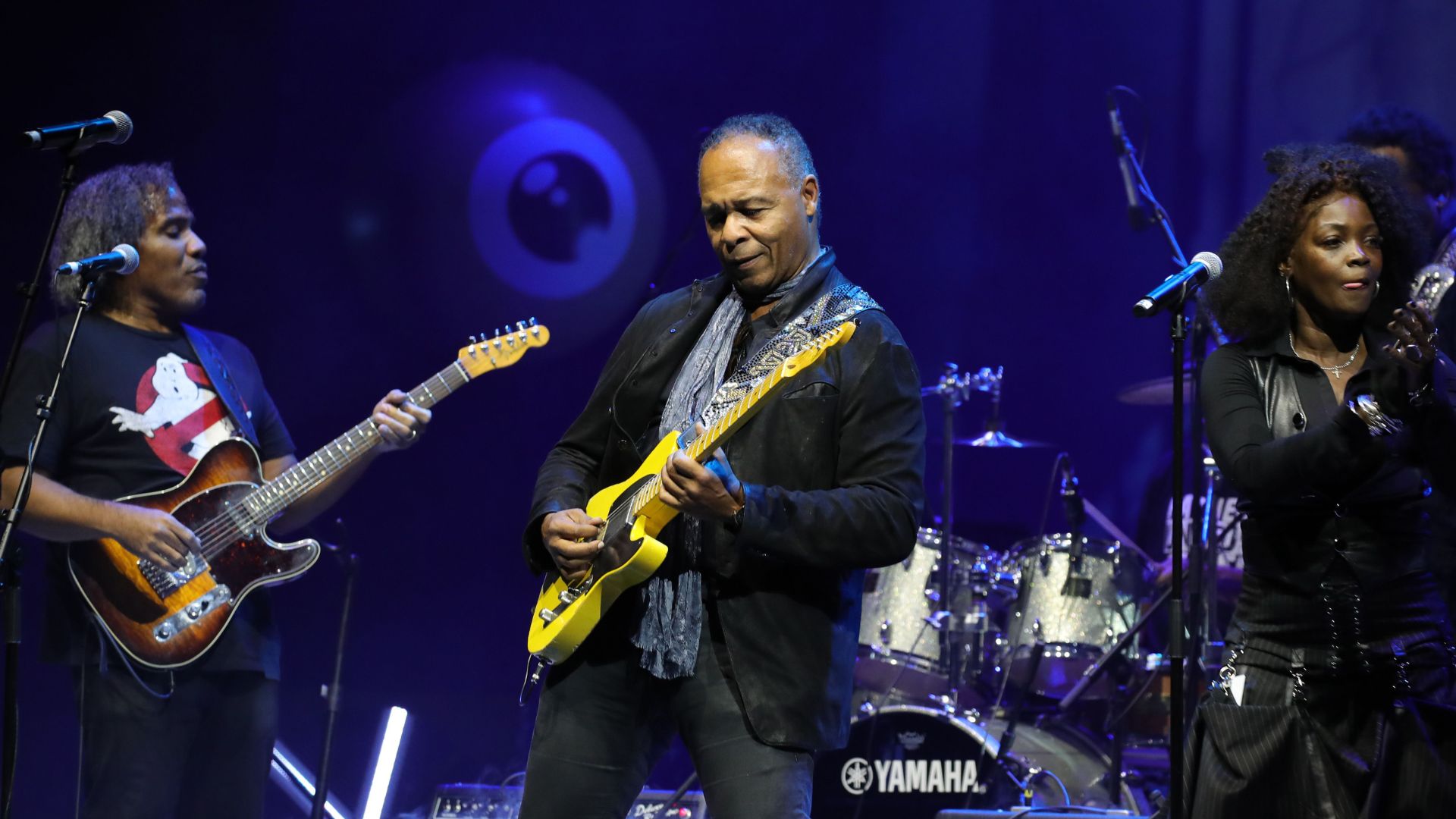
Ray Parker Jr. is known as a brilliant songwriter with hooks for days, but as a guitarist, he's always kept things simple in regards to gear choices. To that end, in a recent, career-spanning conversation with Vertex Effects, he confessed his love for mono.
“Remember there was no Pro Tools back then [when I started], so we recorded two guitars in mono. That’s it,” he says. “I really don’t care about stereo, I just love mono guitar. Even on stage, I use a mono amp. There are not many effects I like in stereo.”
His go-to guitar on the majority of the hits he played on was a cherry red, late ‘60s Gibson 335. For amps, he says he never looked away from a silverfaced Fender Princeton. Never was his Princeton “the fancy one,” either – a small 10” speaker model was all he ever needed.
“It's all I took around to studios, a stock Princeton Reverb. We had a stack of five Princetons, all in mono.”
The R&B and pop guitarist may be most well-known for penning the earworm theme for Ghostbusters, but away from that, he’s had a storied career writing and recording with Bill Withers, Chaka Kahn, Stevie Wonder, and Barry White, amongst others.
Whilst pedals were a rarity for the guitarist, there were exceptions to the rule, including the use of a green screamer on the Ghostbusters theme.
Contrary to one of the film’s most famous lines, Parker admits that he is afraid of ghosts, but took on the task of writing the film’s main theme regardless.
Parker reveals the track paired an ultra-rare Yamaha guitar – of which there were only two of in the world, with it standing as a prototype for a series that never came to fruition – with one of his beloved Princetons.
“I don't know what happened, we were meant to have a series of guitars,” Parker remembers. “A lot of people don't know, but that was the guitar that was on [his solo hit] The Other Woman and Ghostbusters.”
Sat in front of the amp was an Ibanez 808 Tube Screamer pedal.
“We didn’t spend much time on it,” he reveals. “Everything was in a hurry. I only had about three continuous days [to write and record it]. It wasn’t a conscious decision of ‘we need that sound’: We used everything that was in front of us.
“Everything was a first idea. It was so non-practical – it makes me think, ‘why don’t I do all my music like this?’”
Working with Bill Withers saw Parker put his 335 through an MXR Phase 90. Again, a Princeton was the amp of choice as he added his flair to Withers' iconic Lovely Day.
“Clarence Macdonald was the producer and arranger who put it all together. The song was all developed before I came in, but he didn't know how he wanted it to feel. I put the phase on it and that section [his main guitar line] really makes the song ride. When everyone heard it they said ‘that's it.’”
He also revealed a top tip for the skitting guitar tone that can be heard on the first hit single Parker played on, Chaka Kahn’s You’ve Got The Love.
“It’s a Fender Thin pick turned sideways,” he explains. “Grant Green, George Benson, and Melvin Sparks showed me this, so all the masters showed by this is how you do it so, it's not too clicky.
“I was so young, I was 18 with a tape recorder just fooling around,” he says of the track’s origins. “I wrote the song and I wanted Stevie Wonder to cut it, he wasn't hearing it. I wanted Barry White to cut it, he wasn't hearing it. None of them were paying me attention.
“Andre Fischer [of funk band Rufus] says we'll cut it. I went it, recorded the guitars and bass and she did the vocal while I was out of town and it turned out to be incredible. I'd never heard Chaka Kahhn sing before. I asked ‘Who's that singing’ and I've never forgotten that name. That was her first hit and my first hit.”







